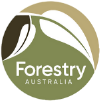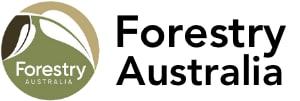
MEDIA RELEASE
Saturday 27 July 2024
Top 10 Tree Planting Tips for National Tree Day
Forestry Australia is encouraging Australians to roll up their sleeves and join the nationwide call to plant one million native trees this National Tree Day, Sunday July 28.
To help budding green thumbs, the scientists at Forestry Australia have put their collective wisdom together to provide a Top 10 Tree Planting Tips list for everyone.
Forestry Australia President, Dr. Michelle Freeman, said the simple act of planting a tree today would have an impact for every day to come.
“Trees are truly remarkable, they do everything from helping the environment by storing carbon, supporting our wildlife with food and a home, and they reduce soil erosion, provide shade and shelter, and support spiritual and cultural wellbeing”,” Dr Freeman said.
“On top of all that, they provide us with fruits, nuts, flowers and wood for our homes, kitchens, furniture, boats, buildings and so much more.
“National Tree Day is a great opportunity to make a positive environmental contribution and build a legacy by planting a tree.
“I encourage everyone to roll up their sleeves, get some dirt on their hands, and enjoy the pure joy that comes from planting a tree that will live and give for years to come.
“Our expert team here at Forestry Australia has worked on a list of Top 10 Tree Planting Tips to help you get started. Have fun!”
1. Choose the right tree:
Before you start planting, choose the right tree species and the right location – think about:
• Annual rainfall: Ensure that the tree you select will thrive in the rainfall and conditions of the area.
• Frost or Drought Tolerance: Some trees are better suited for cold or dry conditions.
• Soil Type: Different trees species thrive in different soil types, it helps if you know what you are working with.
• Weed status: Make sure the tree that you want to plant is not considered an invasive species.
2. Spacing:
When planting multiple trees, ensure there is enough space between them to avoid overcrowding. Adequate spacing helps trees access sufficient sunlight, nutrients, and water. Also, remember to consider the mature canopy size of the trees.
3. Mulching:
Apply a layer of mulch around the base of the tree after planting. Mulch helps retain moisture, suppress weeds, and regulate soil temperature.
4. Support and Protection:
Newly planted trees may need stakes or tree guards to protect them from strong winds, animals, or garden equipment.
5. Monitoring:
Regularly check your trees for signs of pests, diseases, or nutrient deficiencies. Early detection can help you address issues promptly and maintain tree health.
6. Watering:
Monitor soil moisture and water your trees if the soil becomes very dry, especially during dry periods. Deep, infrequent watering encourages healthy root development.
7. Fertilising:
Depending on soil quality and tree species, consider annual fertilisation. Use a balanced fertiliser and follow recommended application rates to avoid over-fertilising.
8. Pruning:
Prune your trees regularly to remove dead or diseased branches and to shape them for optimal growth. Proper pruning promotes strong structure and reduces risk of disease.
9. Seasonal Care:
Adjust your care routines based on the season. In colder climates and more exposed sites, some more tender trees may need to be protected from frost during winter months, especially while they are young.
10. Have fun and pay it forward:
Encourage others to join in tree planting efforts and educate them about the benefits of trees. Together, we can make a positive impact and step towards a greener future.
ENDS
ABOUT FORESTRY AUSTRALIA
Forestry Australia is an independent not-for-profit professional association of more than 1,200 forest scientists, managers and growers who work in native forests, plantations and provision of environmental services. Its members are committed to the principles of sustainable forest management and applying these principles to generate environmental, social and economic outcomes in all types of forests and land tenures.
ABOUT DR MICHELLE FREEMAN MFor, BSc, PhD, GAICD
Michelle has a double degree in Science (Ecology) and Forestry, and a PhD from the University of Melbourne. Her PhD was in partnership with CSIRO Darwin looking at savanna fire and tree dynamics of northern Australia, as part of the Tiwi Carbon Study. She has worked in timber harvesting operations, forest management planning and regulation in Victoria and New South Wales and is currently a forest and land management consultant.
Media Contact:
Danielle McKay
0438 390 273

